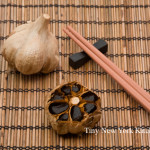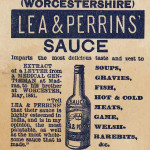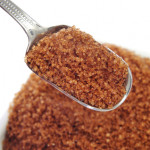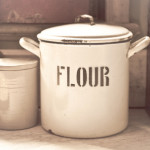Pumpkins earned their name because of their round shape. The English called them “pompons,” which came from the French word “pompom.”
Like many early American dishes, pumpkin pie is a product of indigenous ingredients and English culinary tradition. First cultivated in Central America around 5500 B.C., pumpkins were one of the first foods settlers brought back from the New World. The English quickly added pumpkin to their pie-making tradition, so by 1620, when the Mayflower sailed to the New World, it’s likely some of the Pilgrims were already familiar with these orange gourds.
There’s a very good chance that when the first Thanksgiving was held a year later, pumpkin was on the table in some form. By the early 18th century, Thanksgiving was a well-established holiday throughout New England, and pumpkin pie was part of the feast.
In 1705, Colchester, Connecticut, postponed Thanksgiving for a week, because there wasn’t enough molasses, their sweetener of choice, to make the pies.
“Work With What You Got!”
©Tiny New York Kitchen © 2018 All Rights Reserved
Black Garlic
Black Garlic has been around for quite awhile and is an ingredient that chefs have been using across the country. Think of it as “sweet meets savory.” Black garlic is made when heads of garlic are aged under very specialized conditions until the cloves turn black and have a sticky date-like texture. The taste is delicious and unique with a sweet and earthy umami flavor that intensifies nearly any dish you’re creating.
Garlic bulbs are kept for weeks at low temperatures in a humid environment. The enzymes that give fresh garlic its sharpness break down. These conditions also facilitate the Maillard reaction, the chemical process that produces wild new flavor compounds responsible for the deep taste of seared meat and fried onions.
Black garlic’s flavor is described as tasting like aged balsamic, prunes, licorice, molasses, caramel, and tamarind. Use the cloves as you would roasted garlic. Purée with olive oil for a dense and sweet flavor all its own that compliments steaks, chicken, fish and seafood. Smear the paste on crostini or incorporate it into dressings. Use in a braise to intensify the umami-rich flavor of spare ribs. Add to soups, risotto, noodle and rice dishes, and cheese dips. Black garlic also pairs well with blue cheese.
Black garlic also comes in a dehydrated powder that is considered an umami pixie dust. Just sprinkle a bit of it on anything that begs for depth and earthiness.
Most likely you won’t find black garlic at your local neighborhood market, but some Whole Foods will carry it. I’m lucky enough to get mine at Kalustyan’s in New York City. You can certainly get it online at Amazon or other specialty online food sources.
“Work With What You Got!”
© Victoria Hart Glavin Tiny New York Kitchen © 2016 All Rights Reserved
Season With Worcestershire Sauce
Think of Worcestershire sauce as the “Fish Sauce” of American cooking. Worcestershire sauce is probably one of the most underused condiments. The sauce is a fermented mix of vinegar, molasses, anchovies, and other seasonings that adds great flavor to a dish without adding many calories. I often add a splash to salad dressings, marinades, and sauces, or use it to season ground meat for meatloaf or burgers. Just go easy because it’s high in sodium.
"Work With What You Got!"
© Victoria Hart Glavin Tiny New York Kitchen
Brown Sugar
Most brown sugars are made of white granulated sugar to which a dark syrup has been added. Dark brown sugar has a mild molasses, and light brown sugar has a milder, lighter syrup, which may also be molasses. Dark brown has a slightly stronger flavor, but they may be used interchangeably.
You can easily make your own brown sugar, as you need it by blending together 1/2 cup of granulated sugar with 2 tablespoons of unsulphured molasses. The yield is equivalent to 1/2 cup of brown sugar.
Brown sugar is moist and if it dries out it will harden. It should be stored airtight at room temperature. If it has small lumps in it they should be strained out. With your fingertips press the sugar through a large strainer over a large bowl. If your brown sugar has been left open and becomes hard, place a dampened (not wet) paper towel inside the airtight container for 12 hours or more. A slice of apple can be used in place of the dampened towel.
"Work With What You Got!"
© Victoria Hart Glavin Tiny New York Kitchen











